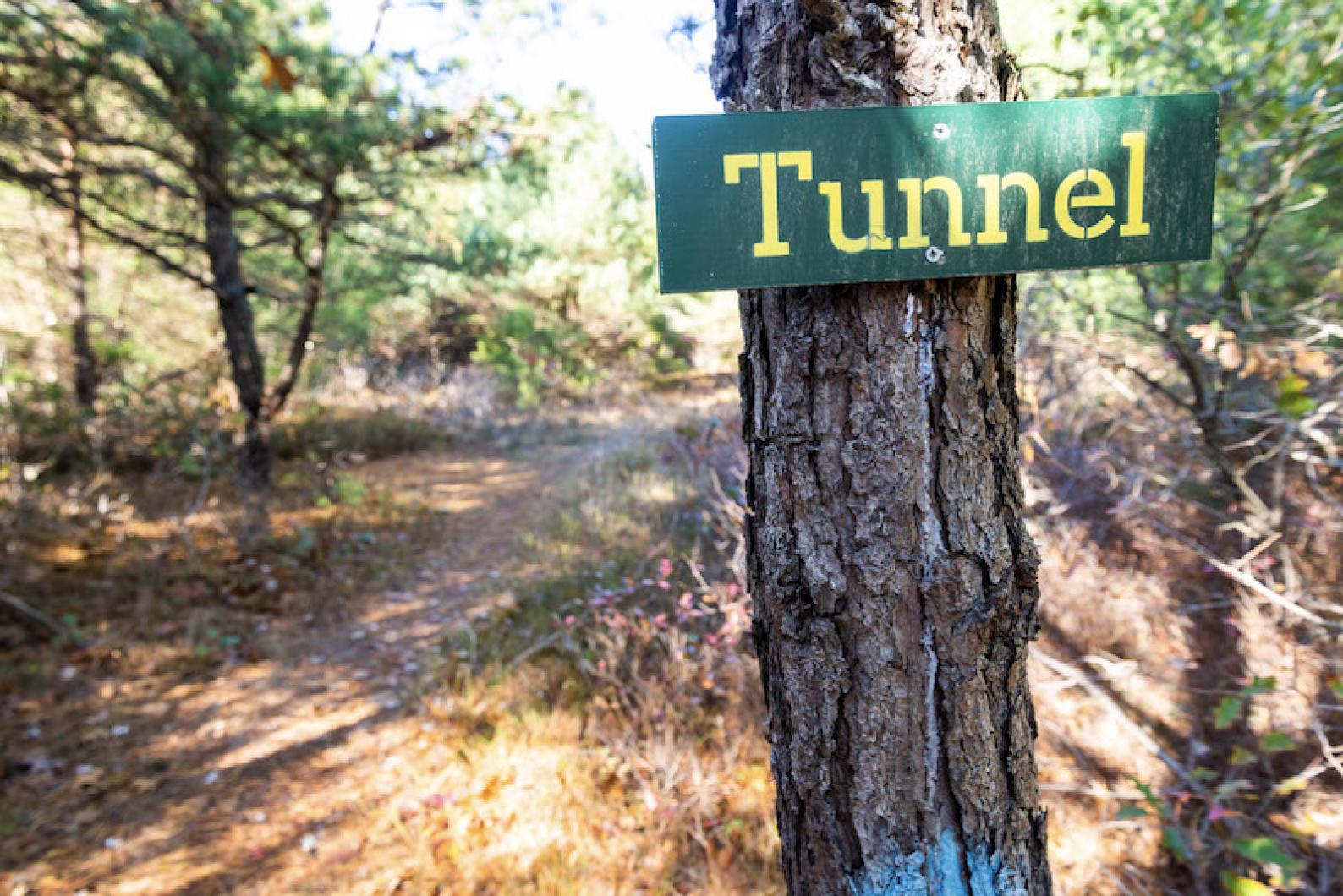As a wildlife biologist and longtime Vineyard resident, I want to offer both a scientific and personal perspective on the recent unpermitted cutting of 15 miles of new single-track trails through rare species habitat in the Manuel Correllus State Forest.
The state forest is home to the highest density of rare species anywhere in the commonwealth of Massachusetts, and 90 per cent is designated as priority habitat under the Massachusetts Endangered Species Act. Over 20 species of rare moths and several bird species whose populations are declining across the Northeast United States find refuge in the large tracts of pitch pine and scrub oak, grasslands and heathlands of our state forest. In addition, a dozen or more rare plants thrive along the sandplain habitat of the fire lanes.
The pitch pine-scrub oak barrens, a globally rare habitat, may seem uninteresting to some, but they host strikingly beautiful species adapted to the harsh environment they call home. While walking one of the fire lanes recently, I saw several buck moths — day-flying moths with vivid orange markings contrasting their white and black wings. The caterpillars of these moths, and others, survive and thrive eating scrub oak leaves while experiencing extreme daily temperature fluctuations in the frost bottoms they occupy.
In May and June, the state forest offers visitors the opportunity to experience the wonder of a prairie warbler, adorned in bold yellow and black streaked plumage, belting out his song that spirals up towards infinity. On a nocturnal visit in late spring, you can reliably hear whippoorwills or woodcocks calling from the darkness. These ground-nesting birds nest successfully in our state forest because it has large tracts of intact habitat where they can nest undisturbed by people and far from edges where predators hunt. They are our natural heritage and something we should protect for future generations.
The proliferation of unpermitted trails since 2018 puts the refuge of these plants and animals at risk. While trails allow us to spend time in nature, this benefit comes at a price to wildlife. Each new trail creates a conduit that brings a variety of threats to what was once an impenetrable scrub oak thicket or shrubland or forest. Invasive plant seeds are transported on shoes, bike tires and animal fur. The people, dogs and bikes using the trail disturb resident wildlife multiple times each day, while skunks, raccoons and cats hunt along trails at night, depredating nests or killing adult birds.
On a typical day, 30 per cent of dogs are off leash chasing wildlife or flushing birds as they explore areas adjacent to the trails, and many leave feces that attracts skunks and raccoons. There is also the potential for leaf blowing as part of trail maintenance that would expose bare soil, increase erosion risks and stop some insects from crossing to the other side of the trail. All these are unintended consequences, but it is important to understand that the impacts of a two-foot-wide trail can extend 100 feet or more into the surrounding habitat.
Keeping large tracts of unfragmented habitat is similar to having savings for unforeseen expenses or to pass on to your children. Large areas of habitat act as source populations for many wildlife species and are important for maintaining wildlife and plant populations into the future. American Trails’ first rule of trail planning is to avoid large intact areas of habitat, and another is to avoid high density of trails to reduce fragmentation. These rules were ignored by those who cut these new trails in the state forest. The trails did not follow Department of Conservation and Recreation (DCR) regulations for trail planning, and no permits were obtained from the Natural Heritage and Endangered Species Program.
No one with understanding of the effects of habitat fragmentation was involved as several of the new trails fragmented large tracts of intact habitat, which include Derailleur, Fantasy, Gateway and Reverie. Others added high-density trails designed primarily for bike riding, such as Zip Tie, Twisty, and Sidewinder. The state forest had 22 miles of existing trails, yet 15 miles of new single track were cut with zero public input.
The state forest is not owned by DCR. It is managed by DCR and owned by the public who deserve transparency about its stewardship and any partnership agreements. These unpermitted trails should be closed on principle because they were cut in violation of state laws and DCR regulations. If proper permitting and a public process had occurred, BiodiversityWorks would have most assuredly been there to speak for the buck moths, prairie warblers and whippoorwills. And speak as well for the humans who care about biodiversity, wilderness — and for our state forest that is the Island’s best chance to protect those values for future generations.
Luanne Johnson is the director/wildlife biologist for BiodiversityWorks, an Island nonprifit based in Vineyard Haven.




Comments (15)
Comments
Comment policy »